Devops News
Dev
268
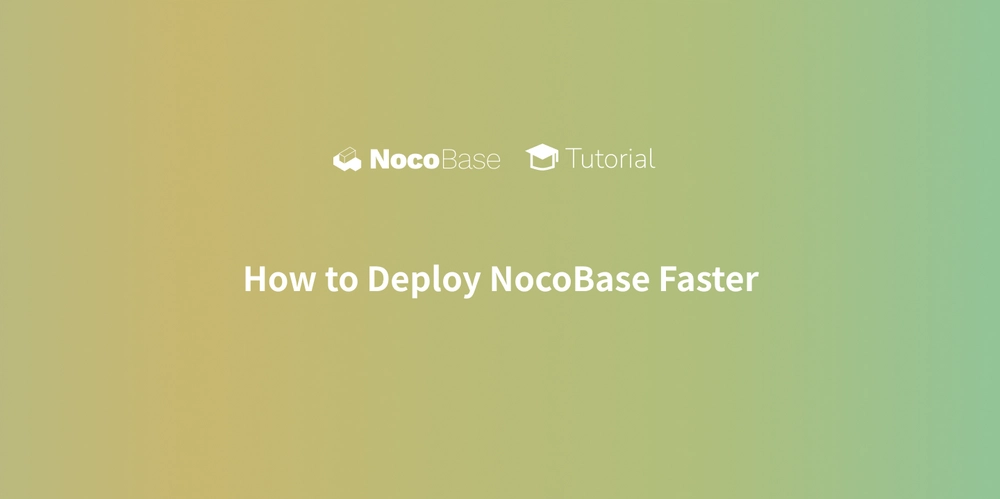
Image Credit: Dev
How to Deploy NocoBase Faster
- To deploy NocoBase faster, network and infrastructure optimization is essential.
- Optimizing HTTP/2 protocol version and network bandwidth can significantly improve access speed.
- Deploying NocoBase closer to the main user base and using global acceleration services can reduce network latency.
- Choosing suitable deployment architectures like Nginx or Caddy as reverse proxies and using CDNs for static resources can accelerate loading speeds.
- Enabling compression, configuring cache settings, and optimizing SSL/TLS can reduce data transfer volume and improve performance.
- Regularly monitoring performance metrics and using tools like PageSpeed Insights can help identify and resolve bottlenecks.
- Implementing CDN services, enabling compression, and optimizing SSL configurations are key strategies for NocoBase deployment optimization.
- Choose servers closer to primary users, use CDNs, and implement compression and caching to boost access speed.
- Take advantage of tools like PageSpeed Insights, WebPageTest, and Pingdom to monitor website performance and optimize accordingly.
- By following the deployment optimization checklist and FAQs provided, users can enhance NocoBase deployment for faster performance.
- Optimizing deployment settings can significantly enhance NocoBase access speed without requiring extensive code changes.
Read Full Article
16 Likes
Dev
332

Image Credit: Dev
Top AWS Consulting Companies
- Accenture: A global leader in cloud consulting, known for enterprise-scale migrations and AI/ML integration.
- Deloitte: Specializes in AWS-driven digital transformation, security, and compliance, with expertise in data analytics.
- Rackspace Technology: Renowned for managed AWS services, cost optimization, and 24/7 cloud support.
- OpsTree: Fast-growing DevOps and cloud-native specialist with expertise in AWS automation and Kubernetes.
Read Full Article
20 Likes
Dev
364
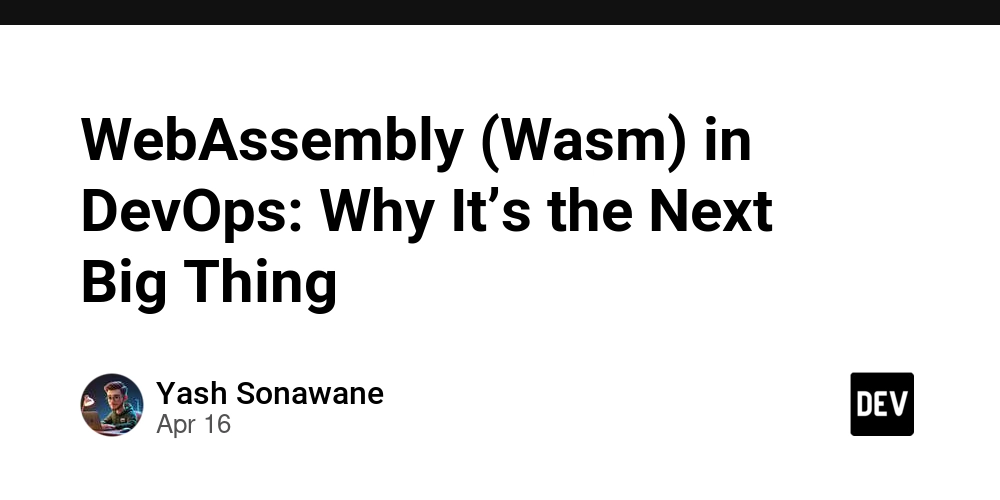
Image Credit: Dev
WebAssembly (Wasm) in DevOps: Why It’s the Next Big Thing
- WebAssembly (Wasm) is a low-level binary instruction format that provides a lightweight, high-performance, and secure execution environment in web browsers and non-browser environments.
- In DevOps, WebAssembly enables high-performance, lightweight microservices, consistent execution across platforms, enhanced security with sandboxed execution, lower resource consumption compared to traditional VMs or containers, and improved edge computing capabilities.
- WebAssembly follows a modular architecture with bytecode format, a virtual machine (VM), the WebAssembly System Interface (WASI) for system-level capabilities, and runtimes like Wasmtime, Wasmer, and wasmCloud to execute Wasm modules outside the browser.
- WebAssembly offers benefits such as portability, security, performance, interoperability, and scalability for DevOps engineers, and is used in various use cases including microservices, serverless computing, edge computing, CI/CD pipelines, and API gateways. It has been adopted by companies like Fastly, Cloudflare, and Shopify.
Read Full Article
21 Likes
Siliconangle
173

Image Credit: Siliconangle
AI at the core: IBM z17 reimagines the mainframe for modern enterprise
- IBM Z recently launched the z17, marking a shift in its role towards new business models and deeper enterprise integration.
- The z17 platform reflects IBM's focus on client priorities and AI integration, with a strong emphasis on user research.
- AI architecture of the z17 includes Telum II processors for increased AI workload throughput and integration of watsonx platform.
- IBM z17 aims to reduce latency in AI-powered tasks with on-chip accelerators, enabling real-time processing for applications like fraud detection.
- The platform also simplifies mainframe usage for a new generation, emphasizing DevOps practices and system admin role simplification.
- IBM Z's z16 release saw significant revenue growth, showcasing the mainframe's resilience and growing importance in hybrid cloud and digital transformation.
- With the z17, IBM enhances hardware for enterprise-grade AI, focusing on speed, embedded inferencing, and reduction of external dependencies.
- IBM's convergence of hardware and software innovation reshapes the mainframe as a fully integrated platform for various enterprise needs.
- IBM Z software strategy led by Skyla Loomis aims to simplify operations, reduce complexity, and invite new developers and operators into the Z ecosystem.
- The Z software integrates AI to automate tasks, enhance productivity, and unlock insights from proprietary data, improving compliance and security.
Read Full Article
9 Likes
Discover more
- Programming News
- Software News
- Web Design
- Open Source News
- Databases
- Cloud News
- Product Management News
- Operating Systems News
- Agile Methodology News
- Computer Engineering
- Startup News
- Cryptocurrency News
- Technology News
- Blockchain News
- Data Science News
- AR News
- Apple News
- Cyber Security News
- Leadership News
- Gaming News
- Automobiles News
Dev
328

Image Credit: Dev
Why Linux Town Is the Best Place to Lose (and Find) Your Files?
- Linux file hierarchy is like a city, with different directories serving specific purposes.
- Important directories include /bin for basic user tools, /sbin for advanced system tools, /etc for configuration files, /home for user homes, and /var for logs and changing files.
- Bash is the command-line interface, allowing users to interact with Linux.
- Understanding the Linux file hierarchy can help users navigate the system, troubleshoot, and work more efficiently.
Read Full Article
19 Likes
The New Stack
419
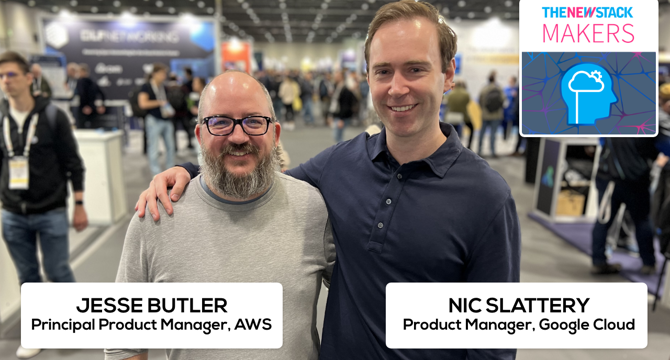
Image Credit: The New Stack
The Kro Project: Giving Kubernetes Users What They Want
- Big tech companies, including Google, Amazon, and Microsoft, have collaborated on an open source project called Kro - the Kubernetes Resource Orchestrator.
- Kro aims to simplify Kubernetes custom resource orchestration and address the challenge of resource orchestration while maintaining cloud flexibility.
- The collaboration emerged in response to customer demand for a Kubernetes-native, cloud-agnostic tool that can run on any Kubernetes cluster provided by any vendor.
- Kro, still in its alpha stage, has attracted significant community interest and is focused on enabling core features and becoming production-ready.
Read Full Article
25 Likes
Openstack
319
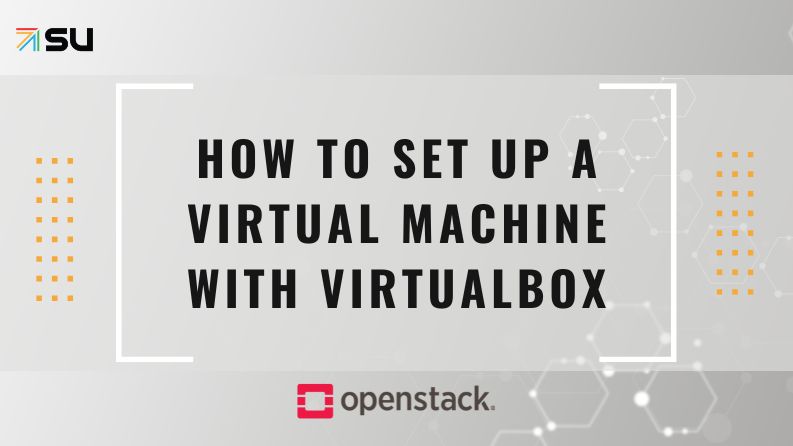
Image Credit: Openstack
How To Set Up a Virtual Machine With VirtualBox
- This guide will walk you through the process of creating a VM using VirtualBox.
- The guide focuses on the configurations necessary to run OpenStack smoothly.
- It provides step-by-step instructions on creating a new VM in VirtualBox.
- It also covers the setup of host network and IP configuration for static access.
Read Full Article
19 Likes
Medium
415

Image Credit: Medium
Get your Registered documents online
- At buysuccessdocumentsonline.com, you can get registered documents online conveniently and without delays.
- The website offers government-registered documents, including driving licenses, passports, residence permits, degrees, and diplomas.
- Their efficient methodology simplifies the process, allowing users to avoid complicated regulations and bureaucratic hurdles.
- Buysuccessdocumentsonline.com provides a straightforward and reliable service, helping customers achieve their ambitions and enjoy convenient mobility.
Read Full Article
24 Likes
Medium
187

Image Credit: Medium
From Scrum Master to Agile Delivery Manager: Evolution in the Age of Flow
- In 2025, the title of Scrum Master was changed to Agile Delivery Manager (ADM) in a technology division, reflecting an evolution towards a more customized Kanban-based model and broader delivery leadership.
- ADM role emerged as a natural progression from traditional Scrum Master roles, focusing on servant leadership, Agile values, and adapting to modern delivery demands.
- The shift to ADM was a result of observing the gap between agile roles and current delivery requirements, emphasizing value creation, flow efficiency, and business impact.
- ADM responsibilities include coaching teams, managing delivery risks, tracking systemic flow, and improving team performance and delivery efficiency.
- The ADM oversees workflow across different work types to drive tangible business value, but does not operate across multiple delivery teams or coordinate program-level work.
- ADM focuses on leading strategic transformation, championing Flow Metrics and Value Stream Management, and shaping how teams deliver real business value.
- The role combines delivery leadership, agile stewardship, and flow optimization, going beyond the narrow scope of the traditional Scrum Master role.
- The ADM role acknowledges the need to scale agility through people rather than frameworks alone, embracing the complexities of modern organizations and delivering outcomes.
- For organizations considering a shift to ADM, it signifies a modern approach to delivery leadership that aligns with the evolving demands of the industry.
- By transitioning to Agile Delivery Manager, teams and stakeholders are signaled about the evolved delivery leadership and are encouraged to embrace this growth.
Read Full Article
11 Likes
Medium
291
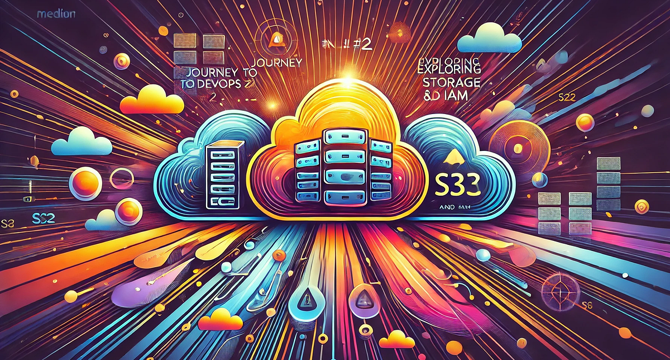
Image Credit: Medium
Journey to DevOps #3: From Local to the Cloud — A Practical Guide to Amazon S3
- This article is the third part of the 'Journey to DevOps' series, focusing on a practical guide to utilizing Amazon S3 for cloud storage.
- The article highlights the process of creating an S3 bucket and uploading files, which are essential steps in managing cloud storage with confidence.
- Readers are guided through the process of creating an S3 bucket by specifying a name and region, and then shown how to upload files using the 'Upload File' option.
- The article emphasizes that although the initial steps may seem simple, S3 can become a powerful tool for storing build artifacts, hosting websites, and more.
Read Full Article
17 Likes
Dev
360

Image Credit: Dev
How Does Netflix Stream Better on Low Bandwidth?
- Netflix delivers smoother streaming than its competitors in low-bandwidth situations.
- Netflix is hosted on Amazon Web Services (AWS), yet provides a better streaming experience than Prime Video.
- Video streaming involves receiving small chunks of data in real time, allowing immediate playback while the rest of the video loads in the background.
- Netflix optimizes streaming through its own CDN called Open Connect, which places dedicated caching servers inside ISP networks for lower latency and minimal buffering.
Read Full Article
21 Likes
Dev
59

Image Credit: Dev
Turbocharged Go: From Profiling to Production-Ready Performance 🔧
- The article discusses the importance of optimizing Go programs for performance, emphasizing the need for profiling to identify bottlenecks.
- It introduces the pprof tool for profiling Go code, highlighting its capabilities in generating call graphs and visualizations like Flame Graphs.
- The article stresses the significance of profiling before optimization, mentioning the importance of identifying hot functions, allocation patterns, and lock contention.
- Memory management in Go is discussed, with tips on understanding and controlling the behavior of the garbage collector (GC) for better performance.
- Strategies to reduce allocations and make the GC more efficient, such as using sync.Pool for object reuse, are shared in the article.
- The importance of choosing the right data structures and algorithms for optimal performance in Go is highlighted, along with tips on concurrency management.
- Best practices for concurrency, including using worker pools to control goroutines, are recommended to improve efficiency and reduce memory usage.
- The article concludes by emphasizing the combination of science (profiling, measurement) and art (knowledge of techniques) for effective performance optimization in Go.
- Developers are encouraged to profile first, control memory allocations, choose suitable data structures, and implement bounded concurrency for better Go performance.
- The article advocates for active practice and exploration in optimizing Go code to achieve blazing speed and improve overall performance.
Read Full Article
3 Likes
Medium
310
Image Credit: Medium
Code Without Chaos: How AI is Automating Agile Development and DevOps for Faster Product Launches
- AI is reshaping agile development, automating various stages of the software development lifecycle.
- AI facilitates backlog grooming by generating user stories ranked by urgency and business value.
- AI assists in code writing and review, providing real-time suggestions and flagging potential issues.
- AI streamlines testing by scanning commits, detecting UI impact, and running relevant tests.
Read Full Article
18 Likes
Medium
45

“The 5 DevOps Mistakes No One Warned You About”
- In the rush to ship features, DevOps often becomes an afterthought, leading to scalability issues and fragile deploys.
- Set up CI/CD with GitHub Actions or GitLab CI to automate testing, linting, and deployment.
- Utilize managed services and treat infrastructure as code to reduce costs, improve scalability, and minimize human error.
- Install basic observability tools like CloudWatch and Loki for better troubleshooting during outages.
Read Full Article
2 Likes
Medium
214

Image Credit: Medium
Must-Have DevOps Tools for 2025
- Cursor is a powerful AI-powered IDE that eliminates the need to switch between editor and AI tools, making coding more seamless and efficient.
- CI/CD tools like GitHub Actions, Argo Workflows, and GitLab CI/CD continue to be popular choices for running tasks in sequence.
- Containers are a key component of DevOps, and tools like Docker and Kubernetes remain essential for managing containerized applications.
- Observability tools like Prometheus and Grafana are crucial for monitoring and ensuring the performance and reliability of systems and applications.
Read Full Article
12 Likes
For uninterrupted reading, download the app